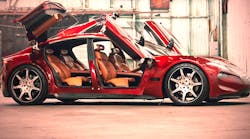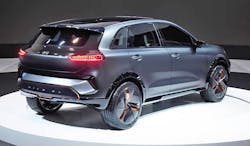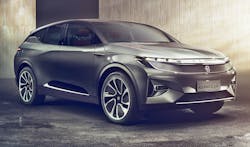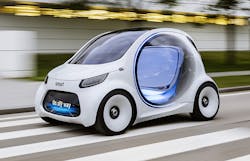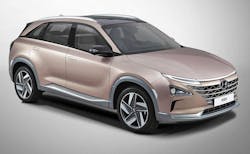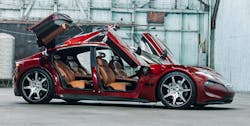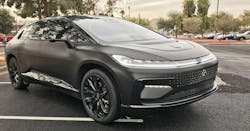The Consumer Electronic Show not only introduces the world to several new electronic gadgets and computer technology marvels, it also hosts some of the most impressive forward-thinking vehicles today. The automotive car market is looking toward electric vehicles and how these designs will shape the tomorrow’s dream cars.
Kia Niro Electric
Kia’s design studio released the Niro EV Concept. The car has a next-generation powertrain that provides electric energy via a high-capacity 64-kWh lithium-polymer battery pack, paired with a 150-kW electric motor. Kia EV concept combines the Niro’s hybrid version with a highly efficient battery-electric powertrain. The crossover features a human-machine interface for the car’s display. In addition, the front grill is replaced with an interactive display panel that leverages an ultra-slim lamp technology.
Byton SIV
Formerly Future Mobility, Byton is new to the U.S. car scene. Its new Smart Intuitive Vehicle (SIV) is an all-electric vehicle that is expected to emerge onto the market by 2019 in China and 2020 in the U.S. for $45,000. The car is available in two models, a single- or dual-motor setup. The single-motor rear-wheel drive has 272 horsepower and a range of around 250 miles from a 71-kWh battery. The dual-motor all-wheel drive has 476 horsepower and a range of 323 miles from a 95-kWh battery. The vehicle also will offer a dashboard screen that spans the car. The Byton SIV will be a level 3 autonomous self-driving car.
Smart Vision EQ ForTwo
The Smart Vision EQ ForTwo targets the urban car market by offering a small electric vehicle to navigate busy city streets. Daimler’s new ForTwo is a two-seat self-driving car that promises plenty of room by implementing intelligent space utilization. The car has no steering wheel or pedals, providing riders with extra room.
Hyundai Fuel Cell SUV Concept
Hyundai’s claim to fame is that it is one of three car manufacturers selling fuel-cell vehicles in the U.S. At CES, the company introduced its new Tuscon SUV concept, which has a 500-mile-range fuel cell. Cost is projected to start under $50,000, and among the advanced features is an artificial-intelligence cabin with voice recognition. Furthermore, the driver seat’s “constant monitoring” provides maximum driver comfort. The car will have 161 horsepower and is expected to hit the market by 2020.
Fisker EMotion
Henrik Fisker’s new EV vehicle, EMotion, looks to compete directly with Tesla. One eye-opening claim is a recharge time of nine minutes for a 125-mile driving range. The total range is expected to be 400 miles. Its exterior design will feature butterfly wings in the back and have Lamborghini-like doors. The starting price is high at $129,000.
Farady FF91
Back at CES 2016, Faraday presented a display model of its future FF91 electric vehicle. In 2017, the company had completed 12 test models and offered 1-minute test rides at CES. Now in 2018, Faraday’s FF91 has gone from crowdfunding in August 2017 to stay afloat to promising cars for consumer sale by the end of 2018. The FF 91 will have a range of 378 miles and the ability to charge at more than 500 miles per hour. It generates 1,050 all-electric horsepower and claims a 0-60 time of 2.39 seconds, making it the fastest SUV on the road. The car will integrate connected features like tracking drivers and passengers’ personal-setting preferences. Several display screens will be mounted in the car, even in the back seat for passengers. The car will also be self-driving, equipped with a high-resolution digital review mirror, 3D LiDAR sensors, 10 high-definition cameras, 13 long- and short-range radars, and 12 ultrasonic sensors.
